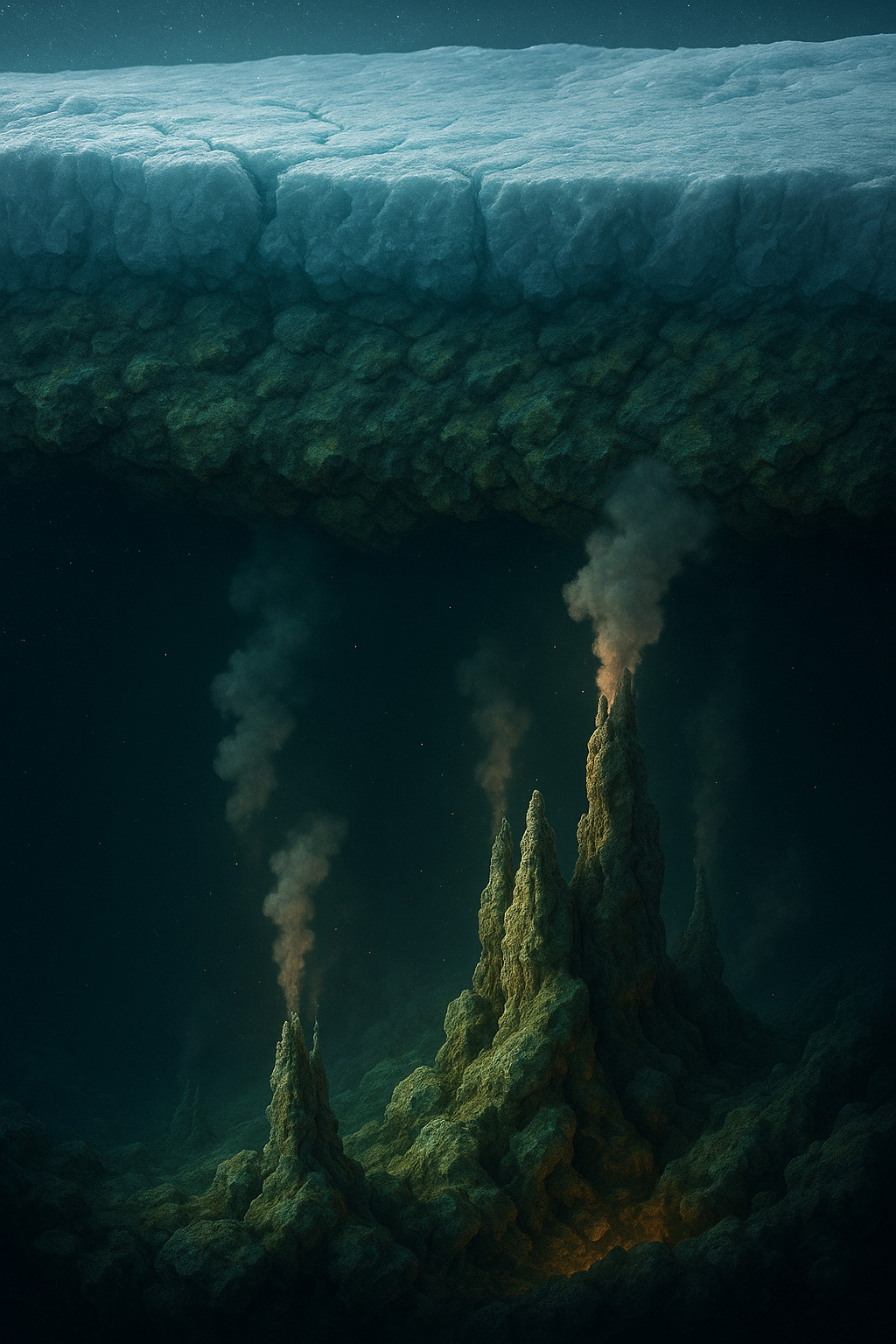🌌 Serpentinization: The Geological Engine That Could Spark Alien Life
Who said life needs sunlight to exist? Sometimes, all it takes is rock, water, and an ancient chemical reaction that’s been running for billions of years: serpentinization.
🔍 What Is Serpentinization (and Why Should You Care)?
Imagine a massive dark rock buried beneath the ocean floor or inside an icy alien moon. Now imagine that, upon contact with water, this rock wakes up—chemically speaking. It begins to transform, heat up, and most importantly: it starts producing hydrogen and methane.
This is the heart of the process called serpentinization: the chemical alteration of ultramafic rocks (like peridotite) when they react with water. The result? A mix of serpentine minerals, reduced gases, and stable, energy-rich environments. In short: a natural chemical reactor where life might begin.
🧪 A Reaction That Creates (Almost) Everything
During serpentinization, three key things happen:
- Rocks become hydrated and transform chemically.
- They release molecular hydrogen (H₂) — a powerful energy source for microbial life.
- In the presence of CO₂, they form abiotic methane (CH₄) — not produced by living organisms.
This environment is:
- Moderate in temperature (50–300 °C),
- Protected, deep underground or beneath ice,
- Chemically active, creating energy gradients essential for primitive metabolism.
In other words, serpentinization creates the perfect underground kitchen to “cook” early life.
🌍 It Might Have Worked on Earth—So Why Not Elsewhere?
Some scientists believe that life on Earth may have originated in serpentinization zones, such as the Lost City hydrothermal vents discovered in 2000 in the Atlantic Ocean. These systems have been active for millions of years, rich in hydrogen, minerals, and chemical diversity.
Even more exciting? Serpentinization isn’t unique to Earth.
🌌 Where to Look for Alien Life? Anywhere with Rocks and Water
Serpentinization can occur anywhere that has:
- A rocky mantle,
- Liquid water (even beneath ice),
- Moderate pressure and heat.
Here are some promising locations in our Solar System:
🪐 Enceladus (moon of Saturn): water geysers rich in hydrogen detected by the Cassini probe. Jackpot.
🧊 Europa (moon of Jupiter): subsurface ocean in contact with rocky core—ideal for serpentinization.
🔴 Mars: ancient mineral deposits suggest past serpentinized rock formations.
In all these cases, serpentinization could create subsurface ecosystems where alien microbes (or alien-like chemistry) could thrive.
🚀 Why It Still Matters Today (Beyond Aliens)
Understanding serpentinization isn’t just an exercise for astrobiology geeks. It’s a key to:
- Developing new renewable hydrogen sources,
- Exploring geochemical evolution of rocky planets,
- Guiding future space missions in the search for extraterrestrial life (what to look for, where to dig),
- Rethinking the story of life’s origins on Earth.
✨ Life Without Sunlight? Yes, Please
Serpentinization teaches us that life doesn’t need light, surface, or ideal garden conditions. Just rocks, water, and a little geochemistry can be enough.
And maybe, somewhere beneath the ice of Enceladus, or deep within an exoplanet’s crust, a similar reaction is still bubbling away, as alien microbes learn to feed in the dark—just like we did, once upon a time.








Leave a Comment